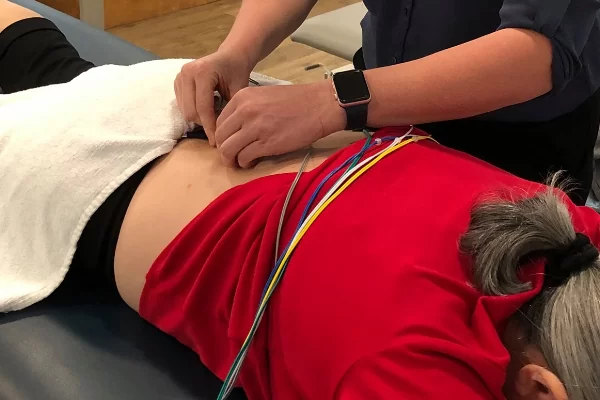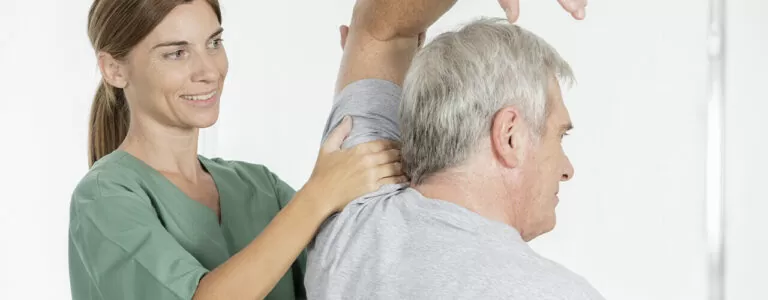Hip and Knee Pain
What Is Hip and Knee Pain?
The knees and hips are the body’s largest joints. Hip pain may be on the outside of your hip, upper thigh or outer buttock. The pain may occur when resting, walking or participating in some kind of activity. Hip and Knee Pain is a common complaint of many people. Its signs and symptoms may include more than just pain. There may be swelling, stiffness, instability, popping noises or the inability to fully straighten the knee. Both hip and knee pain can be persistent and limit mobility and activities.
The Causes of Hip and Knee Pain
Even though the hip joint is durable, the joint can get worn down with age or usage, resulting in hip pain. Bones in the hip can break after a fall and lead to hip pain. Arthritis, hip fractures, bursitis, and tendinitis are common causes of hip pain. Arthritis leads to the breakdown of cartilage. It causes reduced range of motion of the hip, stiffness, and pain. Bursitis occurs when the bursa gets inflamed. There’s friction from the tissues rubbing together. Usually, inflammation of bursae is a result of repetitive activities that irritate the hip joint. Tendinitis is inflammation of the tendons, which are thick bands of tissues that connect bones to the muscles. Like bursitis, it’s usually from overuse.
Knee pain can result in any of the bony structures that make up the knee joint, which are the fibula, tibia and femur. Knee pain can also be caused by damage to the ligaments and cartilage of the knee. Fractures to the knee can cause pain. There may be a ligament injury that causes pain. The most common is anterior cruciate ligament injury. Often, it is due to a change of direction or sudden stop when participating in sports. Twisting the knee can cause injury to the menisci. The menisci are composed of cartilage and act as shock absorbers. If the knee joint becomes dislocated, this can also cause knee pain.
How Physical Therapy Can Help Hip and Knee Pain
Research has shown that those with hip and knee pain benefit from physical therapy. One study compared patients with manual techniques and mobilizations to people who just did exercises at home to reduce hip and knee pain. The patients who went to physical therapy had twice the pain relief compared to those who didn’t undergo physical therapy. The manual techniques of physical therapists also improved daily mobility and the quality of life.
Our physical therapists at Rehab Dynamics will design specific exercise programs to target hip and knee pain. Patients may also undergo passive treatments, such as ice therapy, heat therapy, laser therapy or electrical stimulation to help reduce pain. All around, physical therapy takes a holistic and multi-faceted approach to help patients manage hip and knee pain.
If you’re suffering from hip or knee pain, take action. Contact Us Today at Covington & Mandeville, LA Centers to learn more about how our experienced and certified physical therapists can help get you on the road to recovery. Don’t suffer in pain when we can help you.
FAQs
What causes knee pain?
Your knees are hinge joints that allow for the forward-and-backward motions within the joint. The knee is one of the largest joints in your body, made up of a complex system of bones, tendons, and ligaments. Because of this, the knee can be easily injured due to overexertion or repetitive motions. Additionally, knee pain can be caused due to an underlying ailment. Some of the most common causes of knee pain are sprains, strains, fractures, tears, dislocation, tendinitis, bursitis, and arthritis.
How long should knee pain last?
Some knee pain can ease on its own. However, if you notice persistent pain, you should contact a physical therapist. Many people try to push through the pain that they feel; however, this can actually cause an issue to worsen and become more problematic. Sharp or dull pain in the knee should be paid attention to and not pushed through. If pain persists, especially for three months or longer, it is in your best interest to contact a physical therapist, as that can be an indication of a chronic condition.
Is walking good for knee pain?
Knee pain can be debilitating, making it difficult to walk, run, and move. While exercise can certainly help heal the root cause of your knee pain, it is important to make sure to only do so under the discretion of your physical therapist. Your treatment plan will largely consist of targeted exercises and manual treatments; however, additional pain relief modalities may also be added as your physical therapist deems fit. This will help you improve any problem areas and prevent further injury from occurring.
What is the best therapy for knee pain?
Our licensed physical therapists will examine your knee for signs of misalignment or structural damage, in addition to examining your stance, posture, gait, and range of motion. After your physical exam is complete, your physical therapist will prescribe a physical therapy plan for you, aimed at relieving unnatural stresses and strains, and normalizing your joint function. Treatment plans for knee pain typically include activity modification, manual therapy, strength and capacity training, range of motion restoration, graded exposure to previously painful activities, and patient education regarding activity modification.





